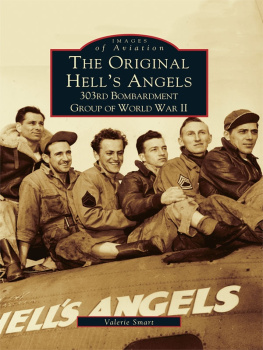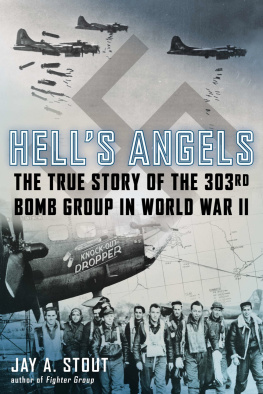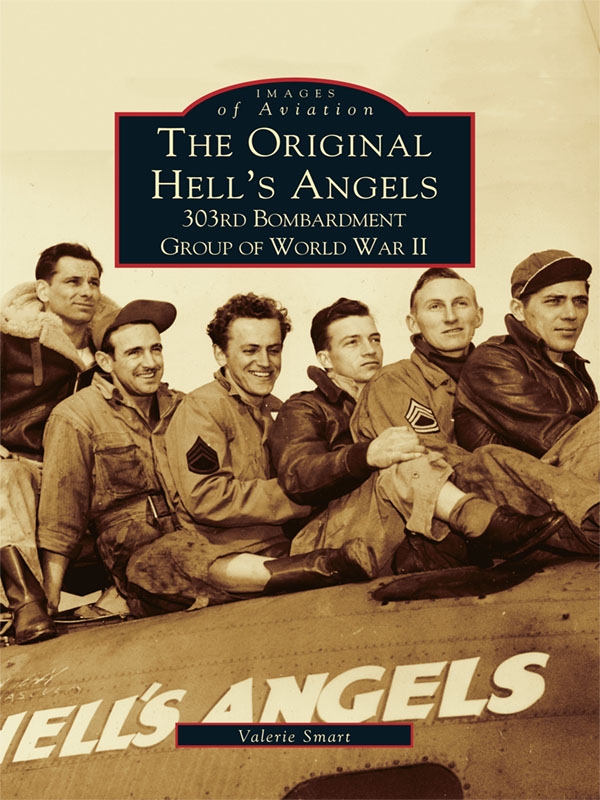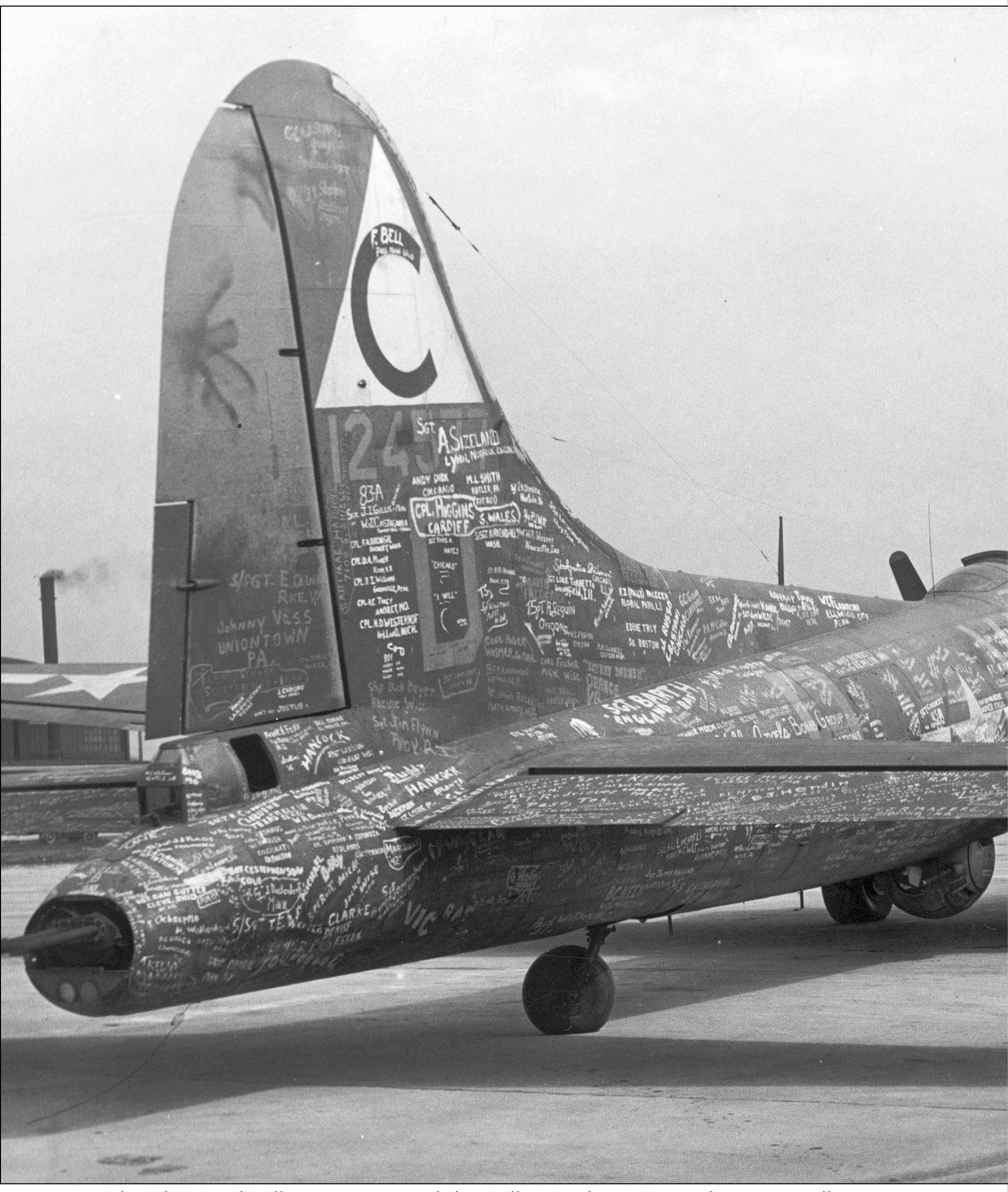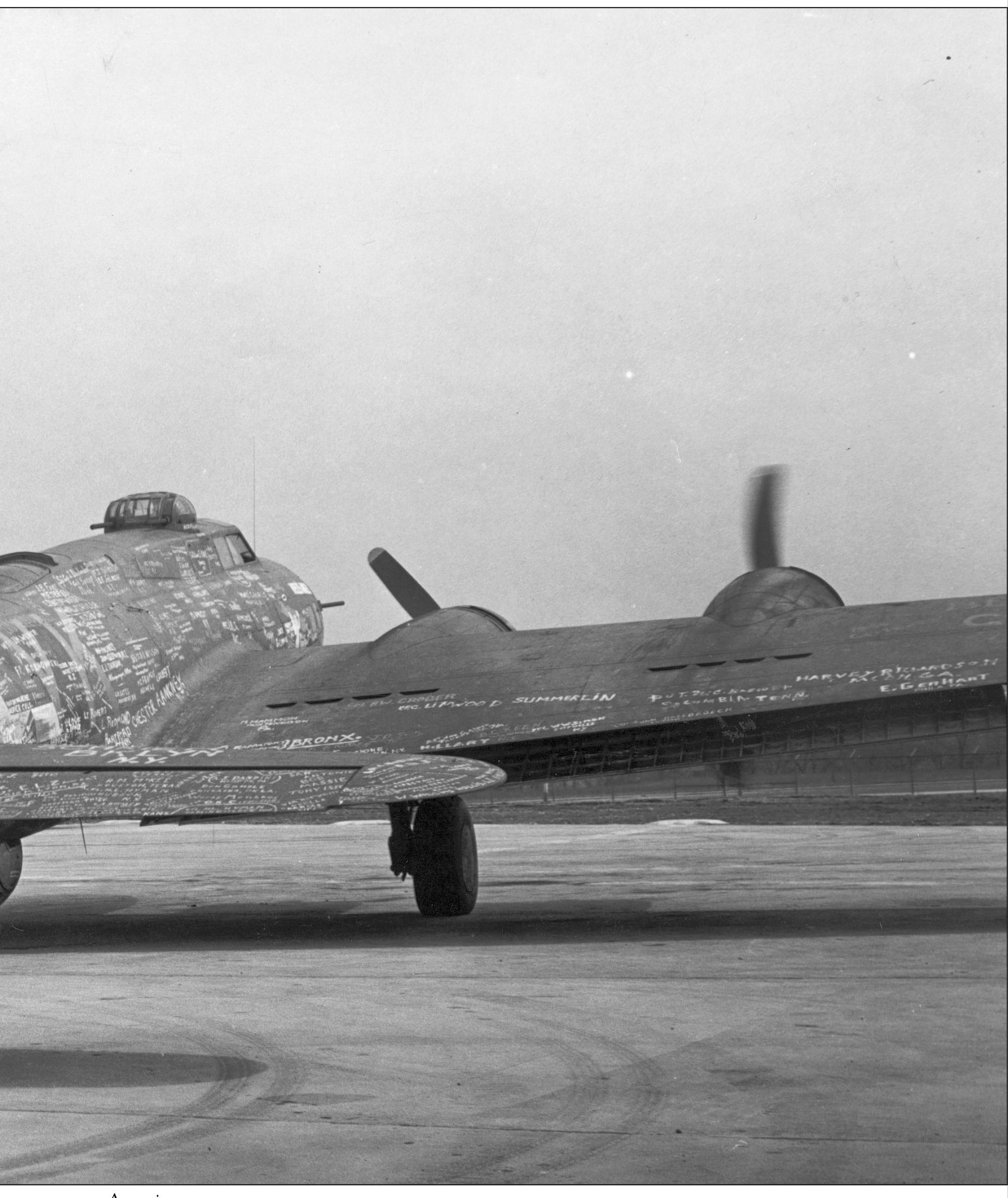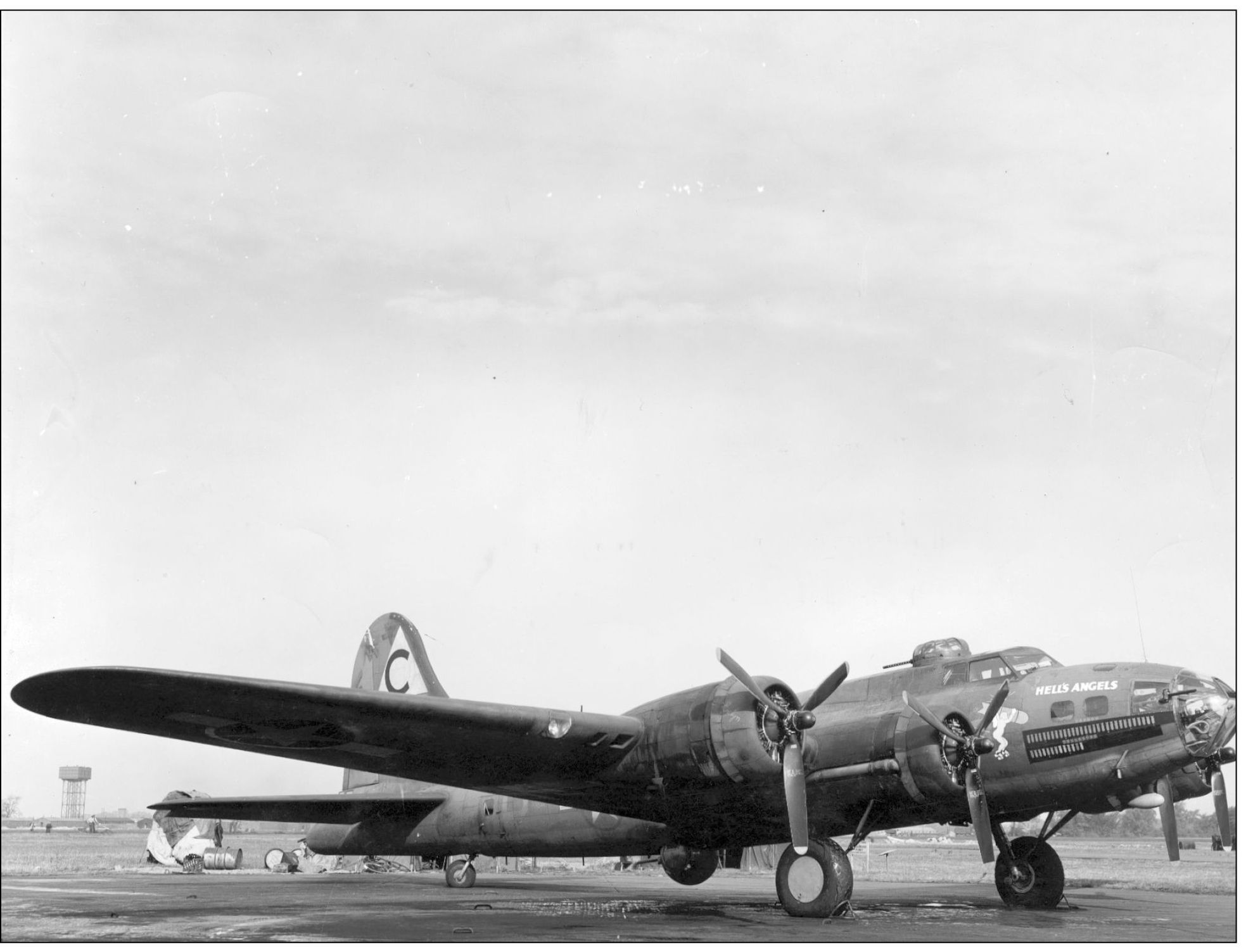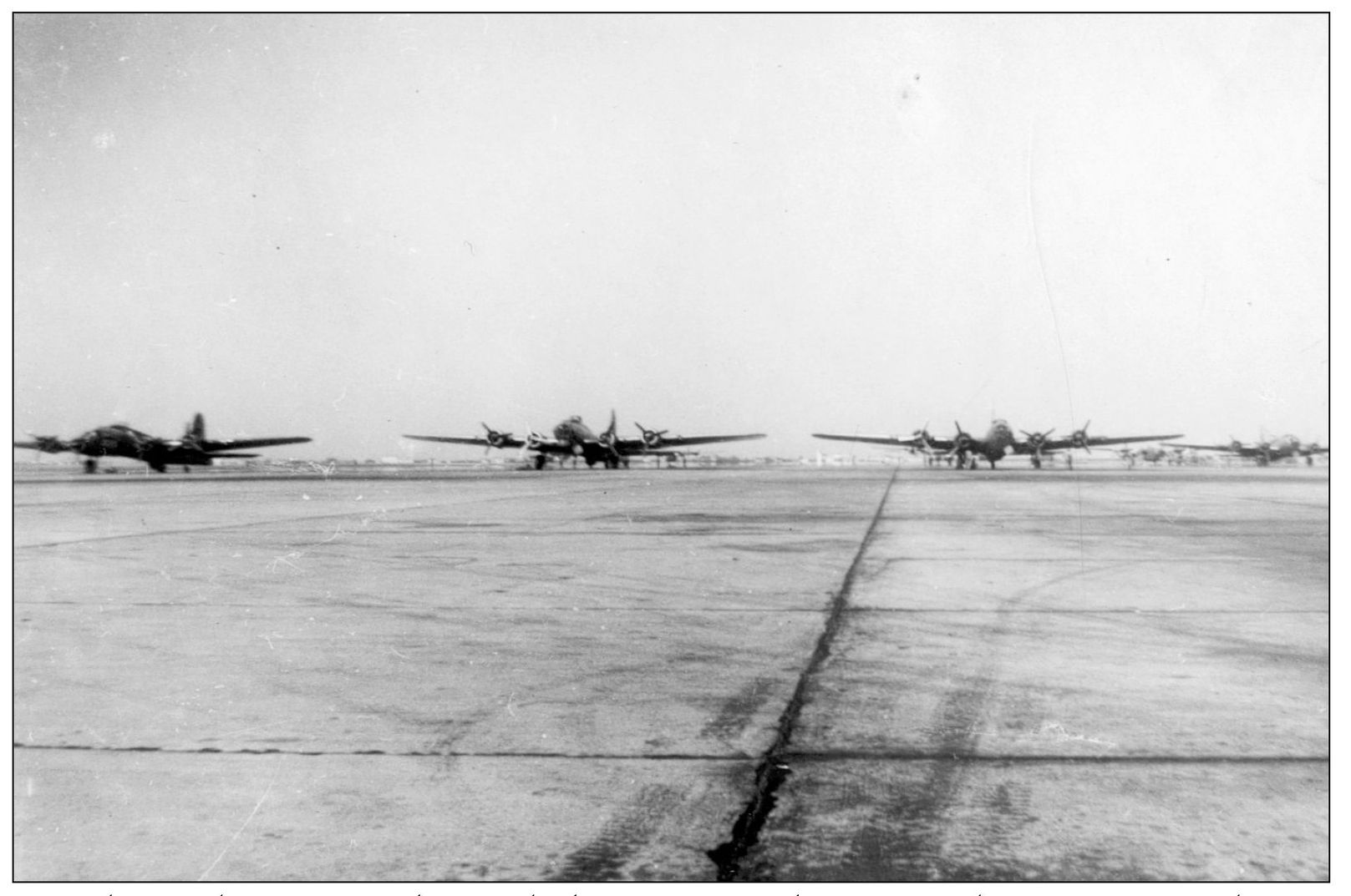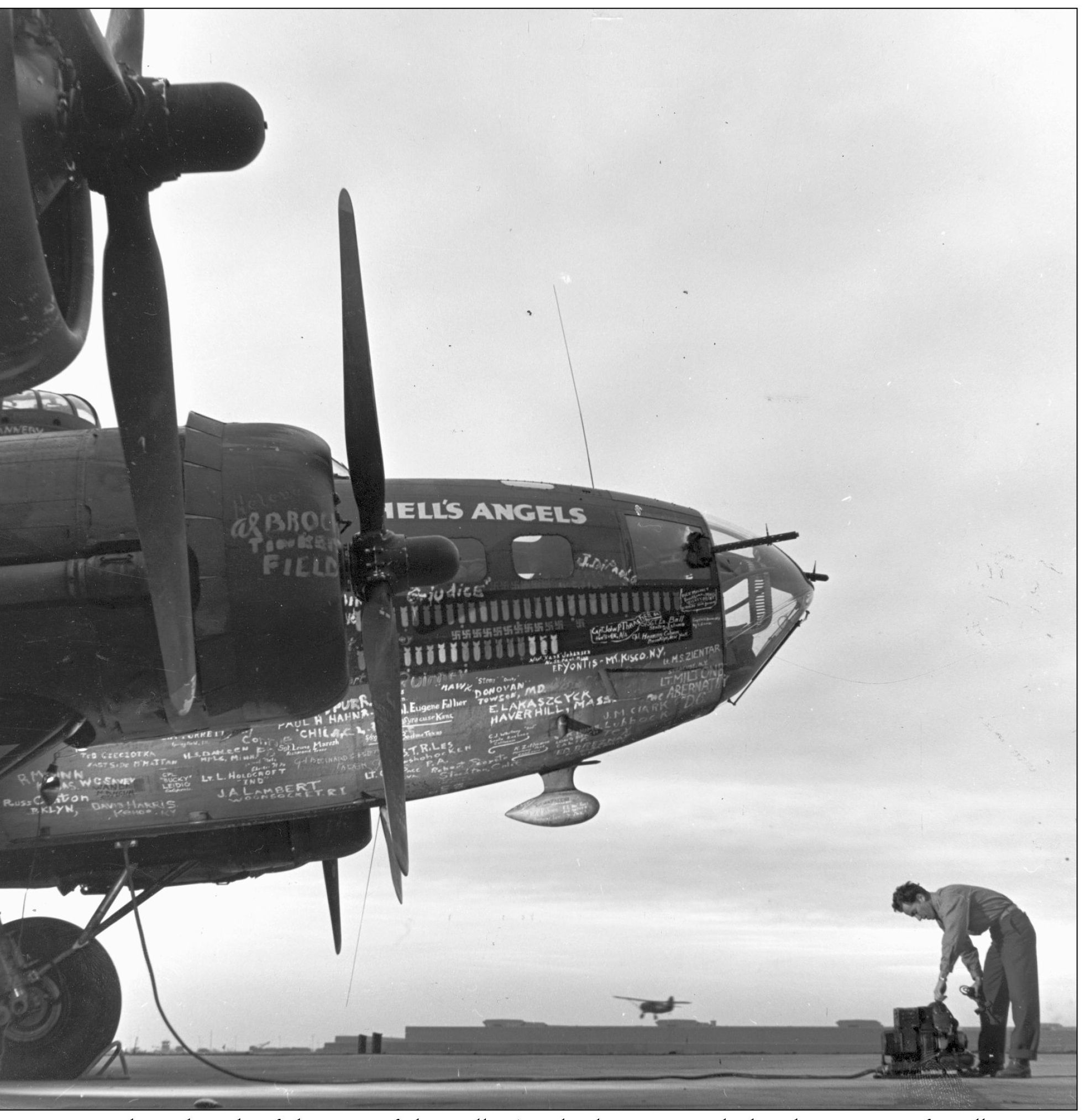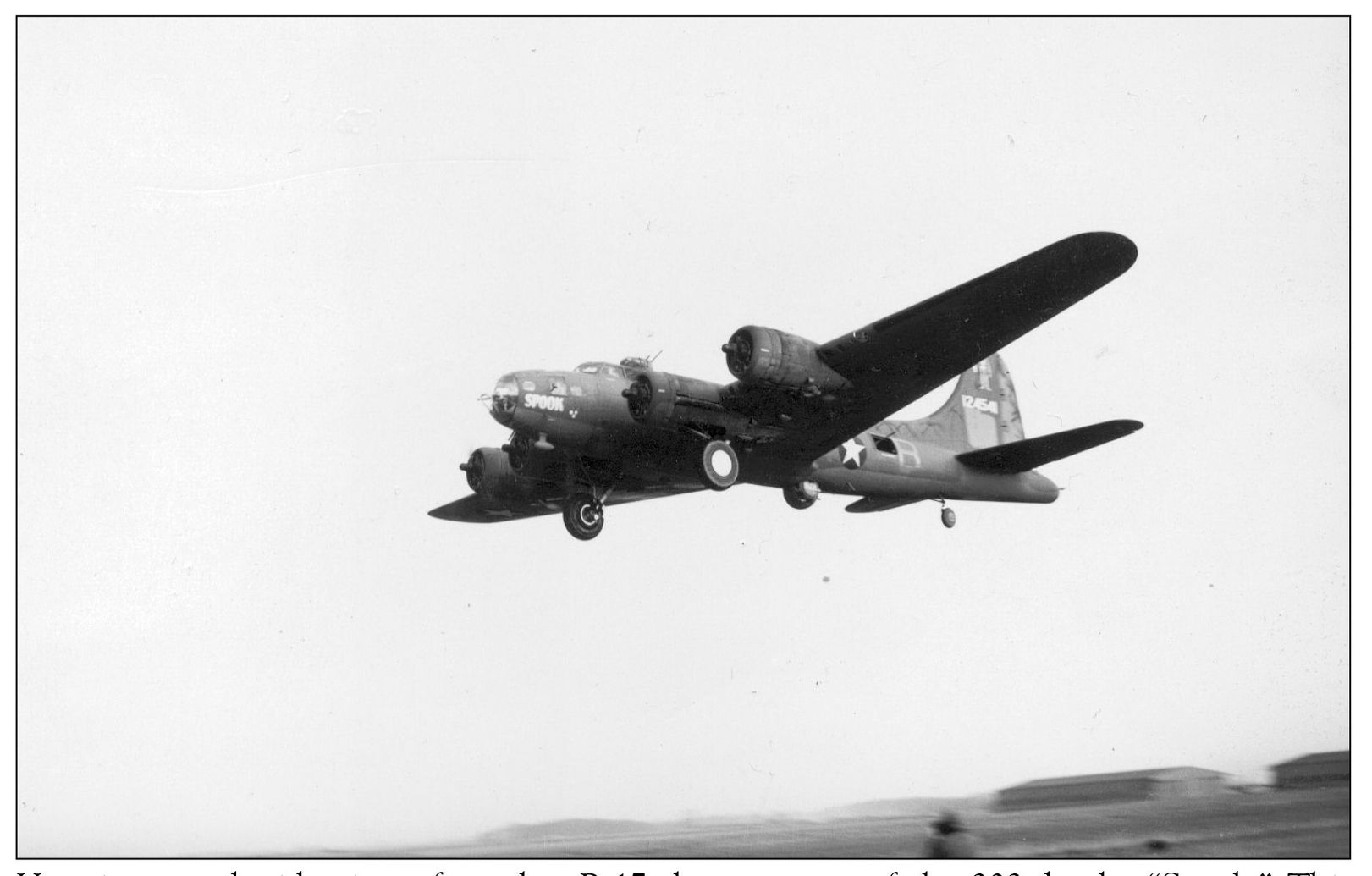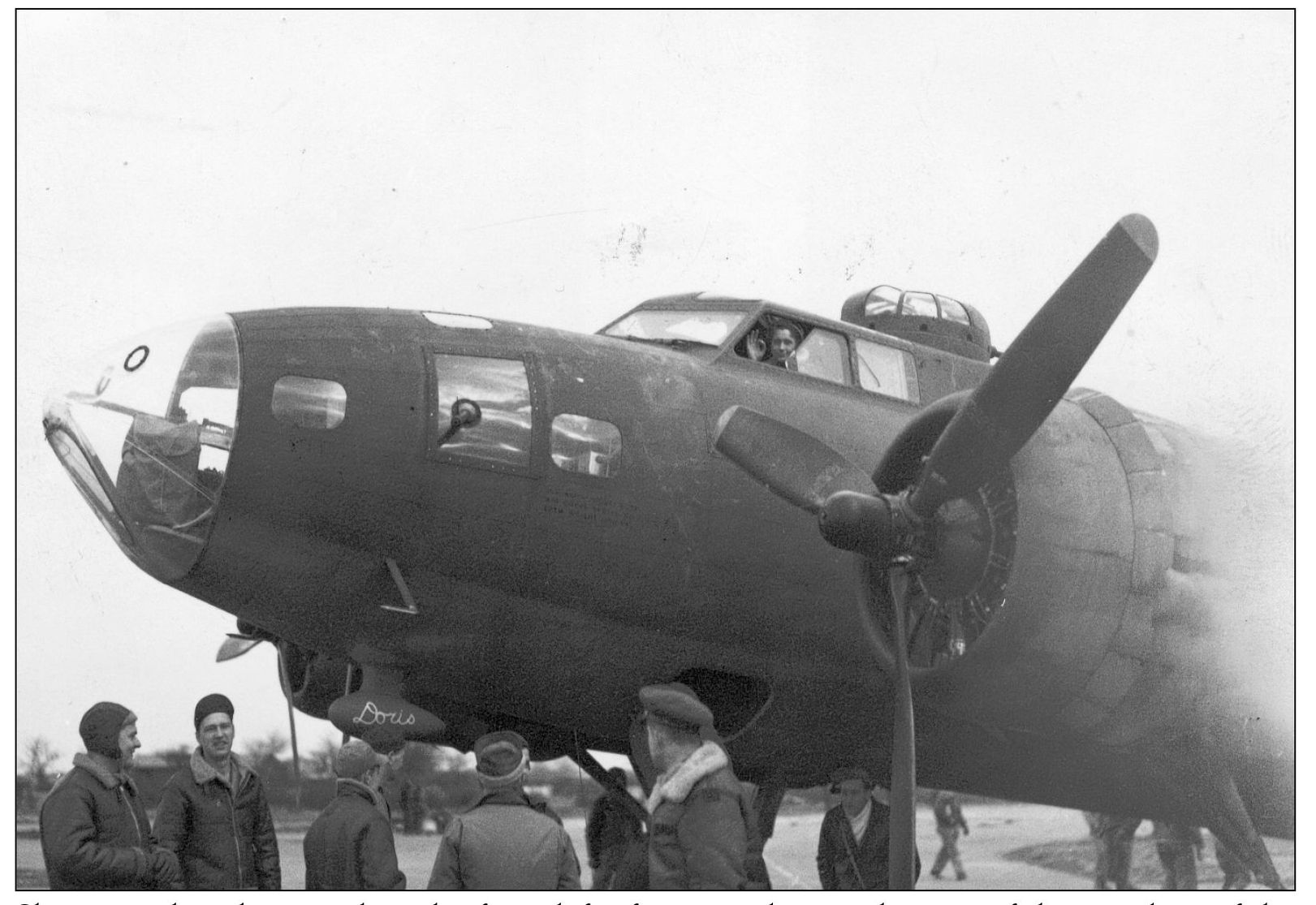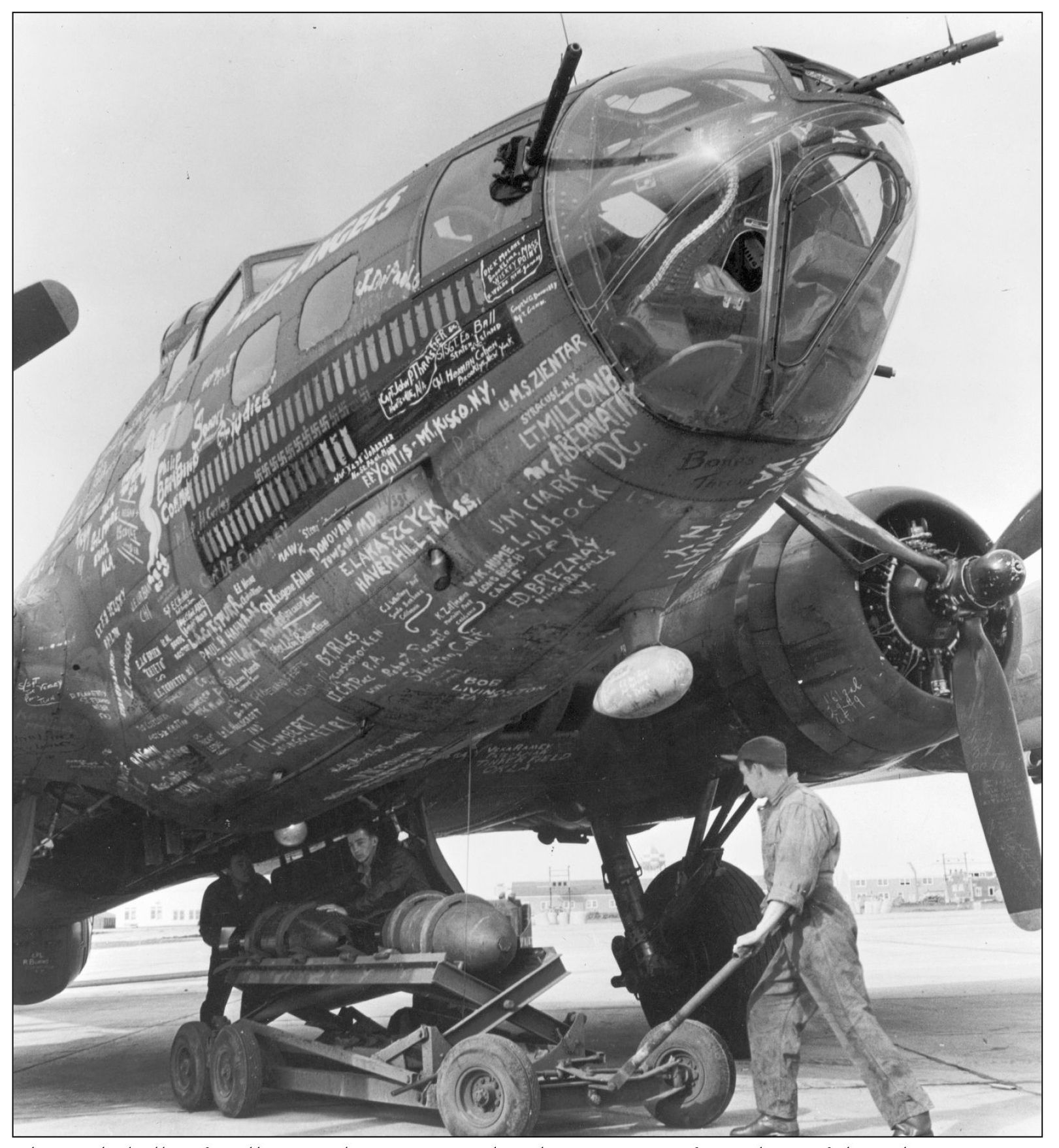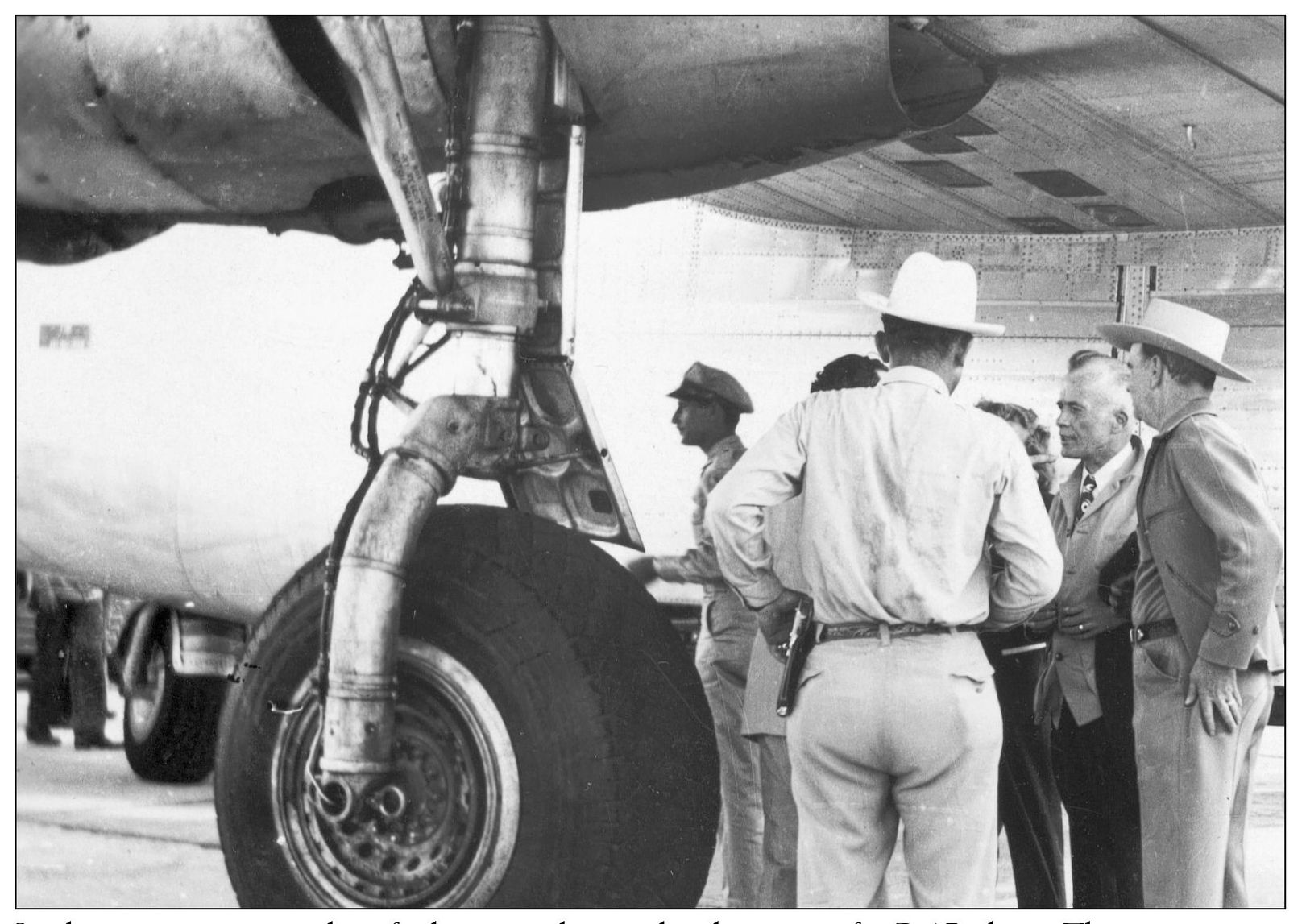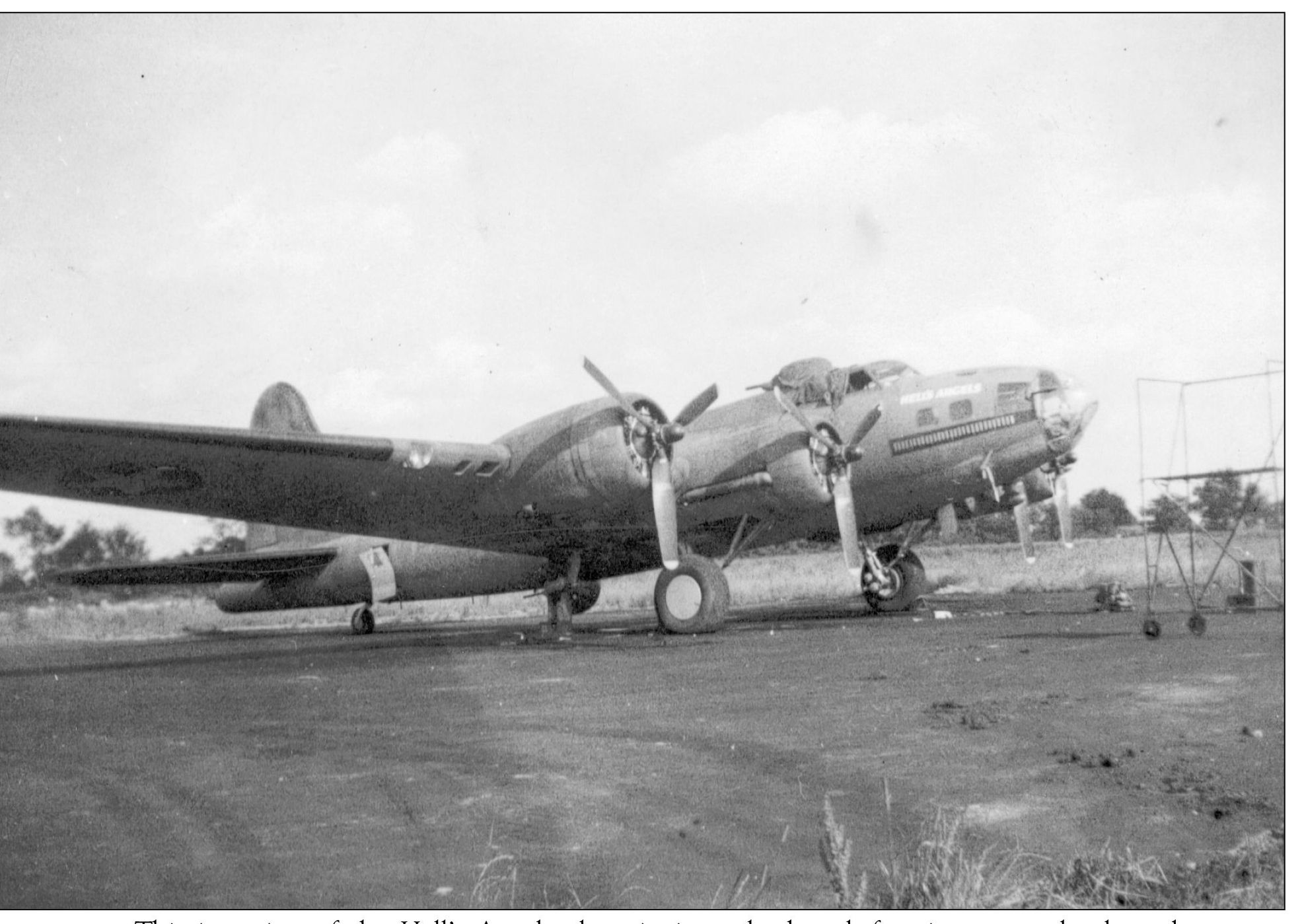One
THE PLANE HELLS ANGELS
Shes done a swell job on Hitlers Fortress. She dropped more than 150,000 pounds of bombs. She left her calling card on Lorient, Rennes, Rouen, Amiens, Lille, Rotterdam, Antwerp, Vegesack, and the old girl has more than earned her keep. We believe her to be perhaps the most fought ship in the U.S. Air Force.... There was one time when it seemed impossible that a ship so badly crippled could have made it home. But she did. Shes a ship that Hitler will never forget.
Capt. Irl Baldwin and M.Sgt. Fabian Folmer on the plane Hells Angels.
That ship had some luckno matter what kind of stuff the Jerries threw up at her, she always came home with her usual report, Bombs on target.
M.Sgt. Fabian Folmer.
This photograph offers a rear view of the Hells Angels B-17 aircraft as it sits idle on an American runway.
This image offers a front view of the plane as it sits parked on a runway. Note the artwork of a cherub wearing roller skates and carrying a bomb. The artwork was originally designed and painted by Pfc. Bernard K. Kastenbaum in late 1942. It was later repainted by S.Sgt. Harold E. Godwin.
Several B-17 planes are seen here parked on a runway. The B-17, or Flying Fortress, was known as a revolutionary weapon. Its dimensions are as follows: length, 74 feet 9 inches; wingspan, 103 feet 10 inches; height, 19 feet; gross weight, about 60,000 pounds; average bomb load, 5,000 pounds; cruising speed, 211 miles per hour; horsepower, 4,800; and an armament of 12 .50-caliber machine guns.
Shown is an illustration of the tail markings of the B-17s that were flown by members of the 303rd Bombardment Group, part of the 41st Combat Wing of the 8th U.S. Army Air Force, including the Hells Angels plane. The 303rd was made up of the following squadrons: 358th, 359th, 360th, and 427th. Between November 17, 1942, and April 25, 1945, they flew a total of 364 missions. (Graphic courtesy of the New England Air Museum.)
The right side of the nose of the Hells Angels plane was marked with two rows of small drawings of bombsa tally of the 48 successful bombing missions the plane completed over Hitlers Europe. The plane dropped more than 250,000 pounds of bombs throughout its battle days, with the incredible record of never having a crew member in the plane injured or killed. Sgt. Kasmer Wegrzyn is shown here servicing the plane.
Here is an underside view of another B-17 that was part of the 303rdthe Spook. This photograph shows off the planes wingspan of nearly 104 feet.
Shown in this photograph is the front left of a B-17 plane with some of the members of the Hells Angels crew gathered underneath. Throughout its combat career, the Hells Angels plane went through 16 engines, 9 tires, 5 sets of brakes, 3 landing gears, and innumerable superchargers and oil-cooling systems. (Photograph courtesy of the AAF Materiel Command.)
The underbelly of Hells Angels was covered with signatures of members of the 8th U.S. Army Air Force. The men signed the plane before it was commissioned for a war-plant tour of America in 1944. Here, three members of the ground crew are shown loading bombs into the plane.
In this view, some unidentified men gather under the wing of a B-17 plane. This perspective shows off how massive the bombers wereapproximately 75 feet long and 19 feet high.
Three ground crew members of the 8th U.S. Army Air Force service a B-17 plane in this view. The ground crew members worked day and night to prepare the planes for combat missions and then to repair the planes when they returned home after the missions.
This is a view of the Hells Angels plane in its early days, before it went to battle and accumulated more than 200 battle wounds. This photograph was taken before its crew had a chance to finish painting the nose art.
Two
THE MEN OF HELLS ANGELS
For 48 missions the giant bombers ground crew stayed at an advanced base in England while Hells Angels gallant combat crew pierced the hell of Nazi flak and fighter plane fire to drop ton after ton of bombs on Hitlers Fortress Europa. For untold hours these men sweated out each of the 48 missions. There were scars, yes, but the combat crew always came back intact, thanks to the combination of aerial combat teamwork and a plane kept in perfect fighting trim by the invisible crew, six mechanical wizards who, sometimes, practically overhauled the Fortress in a matter of hours between missions so that Hells Angels would be a perfect fighting machine for every mission.

